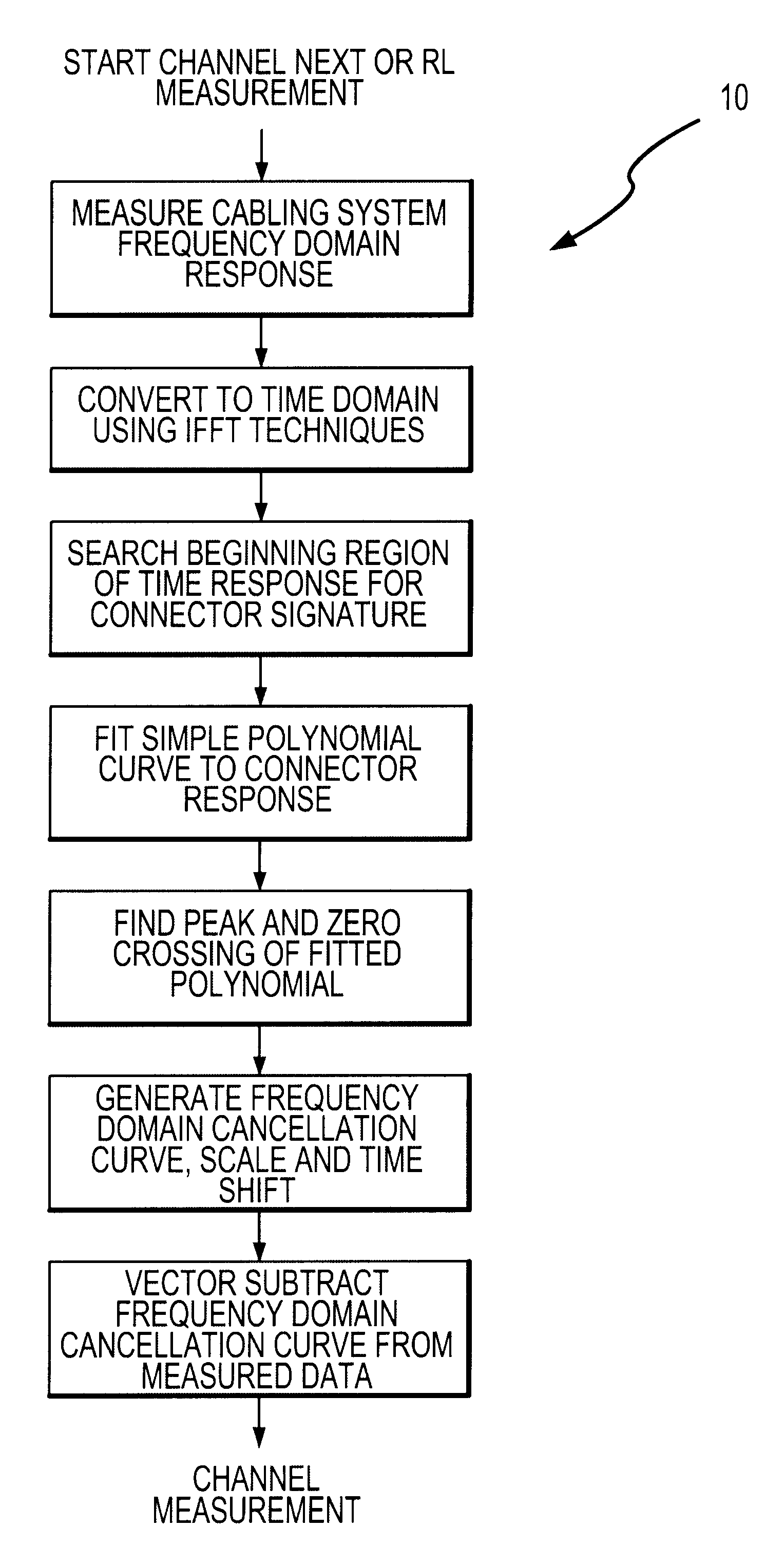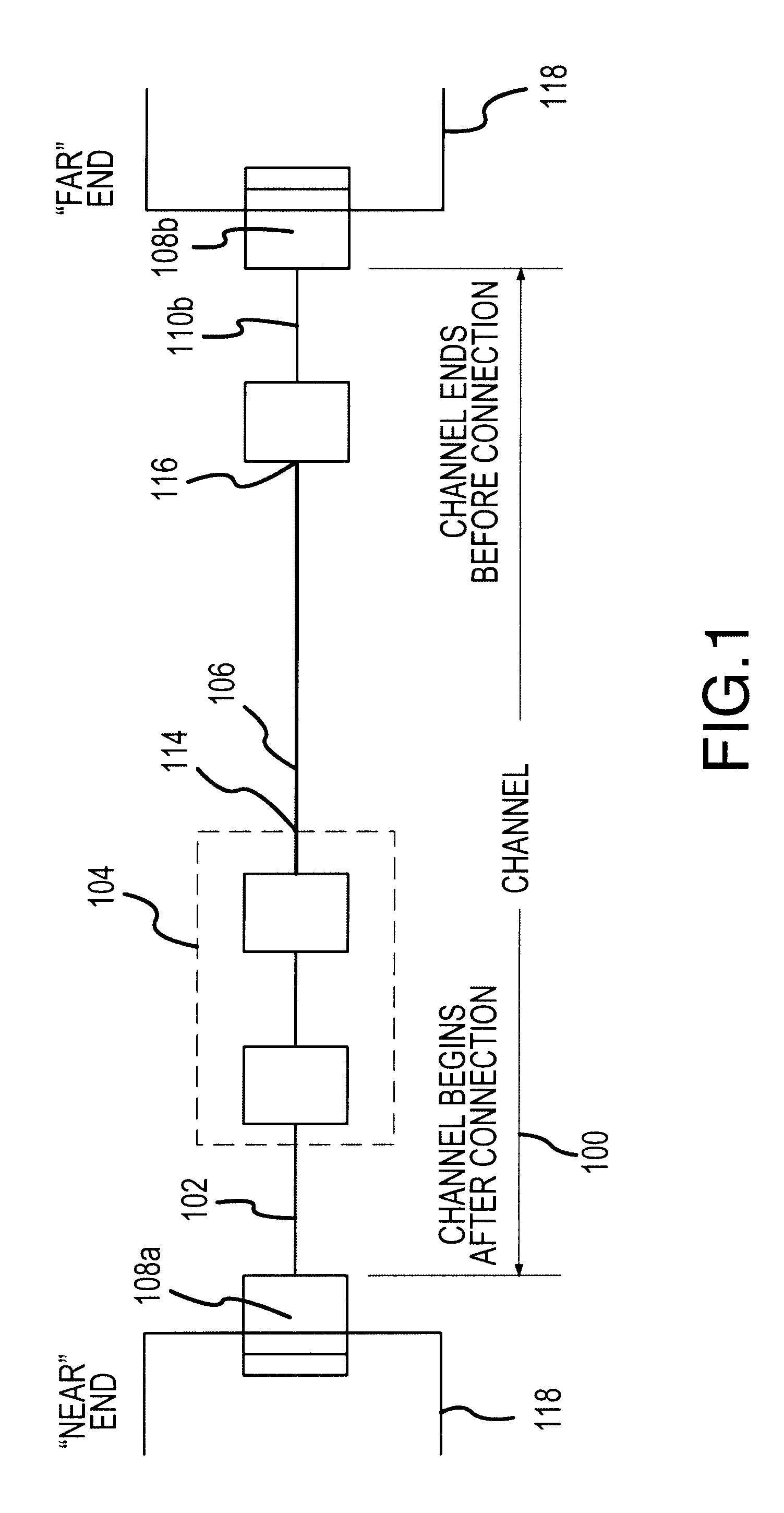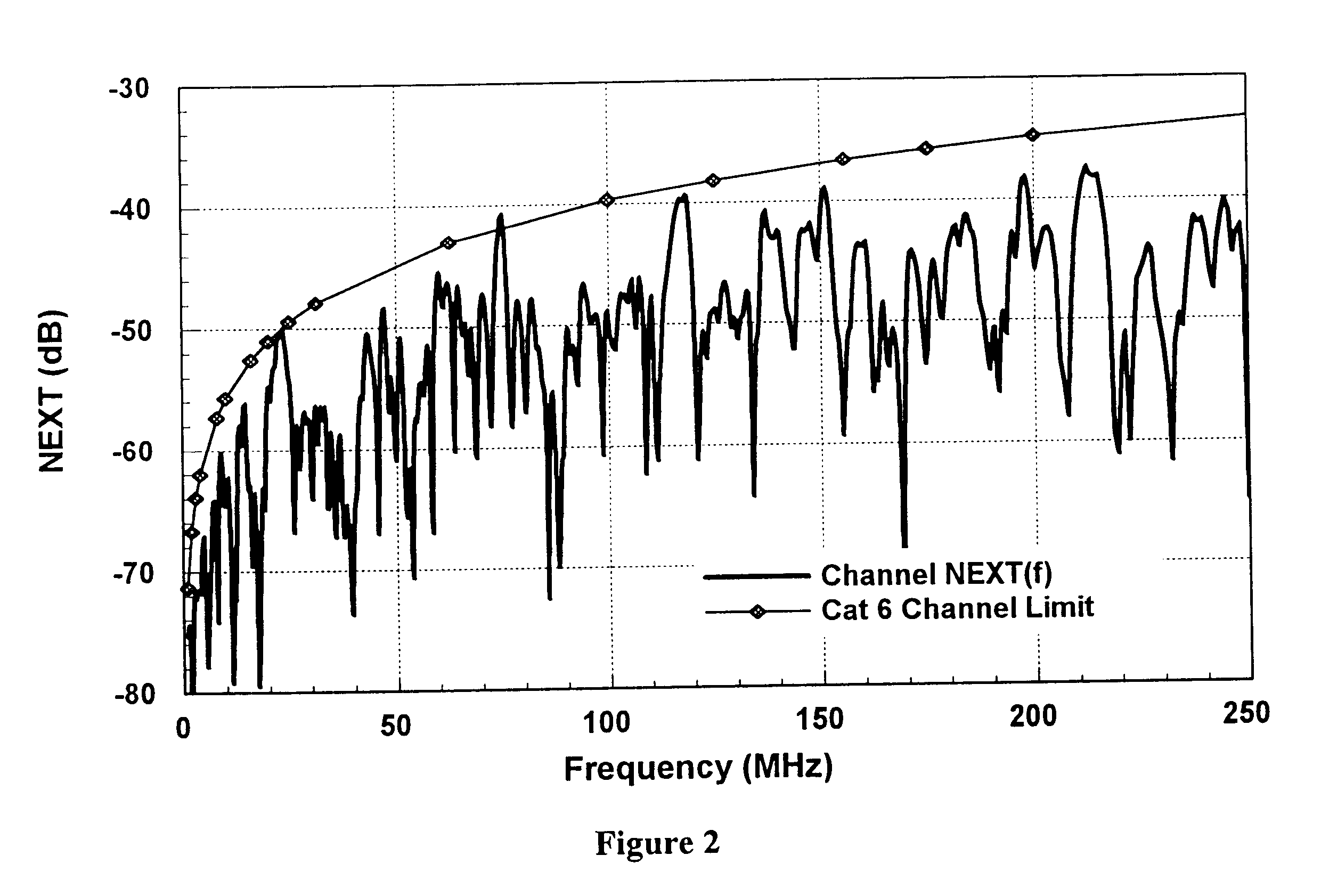Method and apparatus for adaptive cancellation of responses in cabling
a technology of adaptive cancellation and response, applied in the direction of resistance/reactance/impedence, line-transmission details, instruments, etc., can solve the problems of user patch cord unpopularity, data transmission capability questionable, definition may be problematic,
- Summary
- Abstract
- Description
- Claims
- Application Information
AI Technical Summary
Benefits of technology
Problems solved by technology
Method used
Image
Examples
Embodiment Construction
The following descriptions are of exemplary embodiments only, and are not intended to limit the scope, applicability, or configuration of the invention in any way. Rather, the following description provides convenient illustrations for implementing a preferred embodiment of the invention. Various changes may be made in the function and arrangement of the elements described in the preferred embodiments without departing from the spirit and scope of the invention as set forth in the appended claims. For example, while the following description is directed largely to cancellation of connector response, likewise, it should be appreciated that the exemplary methods described herein also apply to cancellation of responses in other portions of cabling links.
The present invention relates generally to a method to estimate the idealized time-domain performance of a test equipment interface and to apply the estimate to frequency domain data measured through the interface with the purpose of re...
PUM
 Login to View More
Login to View More Abstract
Description
Claims
Application Information
 Login to View More
Login to View More - R&D
- Intellectual Property
- Life Sciences
- Materials
- Tech Scout
- Unparalleled Data Quality
- Higher Quality Content
- 60% Fewer Hallucinations
Browse by: Latest US Patents, China's latest patents, Technical Efficacy Thesaurus, Application Domain, Technology Topic, Popular Technical Reports.
© 2025 PatSnap. All rights reserved.Legal|Privacy policy|Modern Slavery Act Transparency Statement|Sitemap|About US| Contact US: help@patsnap.com



